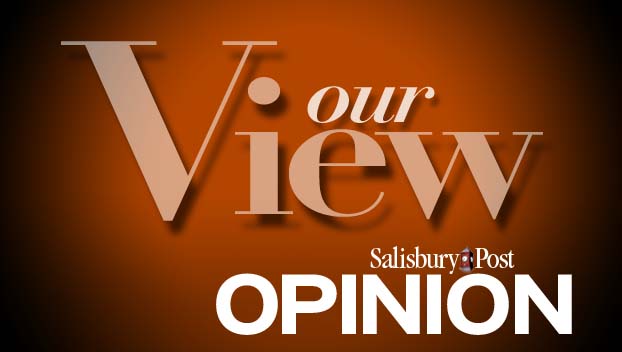Editorial: Changes will be needed for 2020 general election
Published 12:00 am Wednesday, May 20, 2020
On the last day of early voting in the 2016 election, voters lined up hundreds at a time in front of West End Plaza to cast their ballot. Most, of course, were there to bubble in their vote beside Republican Donald Trump’s or Democrat Hillary Clinton’s name. But there were other good races on the ballot, too, including governor and U.S. Senate.
This year, election interest in the county and the state are likely to be similar. At the top of the ballot, there’s Trump facing former Vice President Joe Biden, a Democrat. Gov. Roy Cooper, a Democrat, will face Republican challenger Lt. Gov. Dan Forest. Sen. Thom Tillis, a Republican, will face Democrat Cal Cunningham. There will be school board races on the ballot and some interesting state legislature races as well.
Even if turnout dips to a historic low, tens of thousands of people will cast ballots in November in Rowan County. Historically, the easiest option for them to do so has been by using an early voting location or visiting their local polling place on Election Day.
But business as usual would mean that large groups of people would gather to cast their ballot.
The state can still ensure people have access to vote without making thousands of people wait in lines to cast a ballot. Voting is an essential right to which everyone should have equal access, and that’s not possible when the elderly and immunocompromised could end up risking their lives by traveling to a polling place. It’s also not possible when voters opt for mail-in ballots and the system can’t keep up.
Depending on how you look at local data, Rowan County has flattened the curve of COVID-19. Without a vaccine and with the possibility that the virus could spike again in the fall, there will be an untold number of voters who might stay home to protect their health and opt for mail-in absentee ballots. The current election system is not built to easily count what could be tens of thousands of mail-in absentee ballots.
In 2016, for example, there were 64,650 ballots cast. Fewer than 2,500 people voted by mail-in absentee ballot. It was roughly 2.6% of total voters registered and about 3.8% of total votes cast.
Now, imagine the scenario where 10% of the 92,396 currently registered voters opt for mail-in ballots because of fears about COVID-19. That’s 9,240 ballots and multiple times what the Rowan County Board of Elections saw in the previous presidential election. If a large minority of votes were cast by mail-in ballots, say 30%, it could become an overwhelming task.
To make any large influx of ballots manageable for local boards of elections, state legislators must pass laws that implement some or all of the options proposed by the N.C. Board of Elections in late March. Like everything else, COVID-19 unfortunately has fallen victim to polarization, but the solutions proposed by the State Board of Elections are commonsense during a still-spreading pandemic.
They include things like allowing voters to submit absentee ballot requests by fax and email, establishing an online portal for requests, establishing a fund for postage, increasing poll worker pay, making Election Day a holiday and reducing or eliminating the witness requirement to comply with social distancing requirements.
Election security-focused legislators will disagree with some changes, potentially including allowing nursing home and assisted care employees to assist a voter in requesting or returning a ballot, which is currently a felony. There will be others uncomfortable with eliminating or reducing the witness requirement.
Those disagreements are OK. Legislators should debate about the best way to ensure safe access to the ballot box while not compromising election security. But the state cannot sit on its hands and let disagreements prevent changes.


